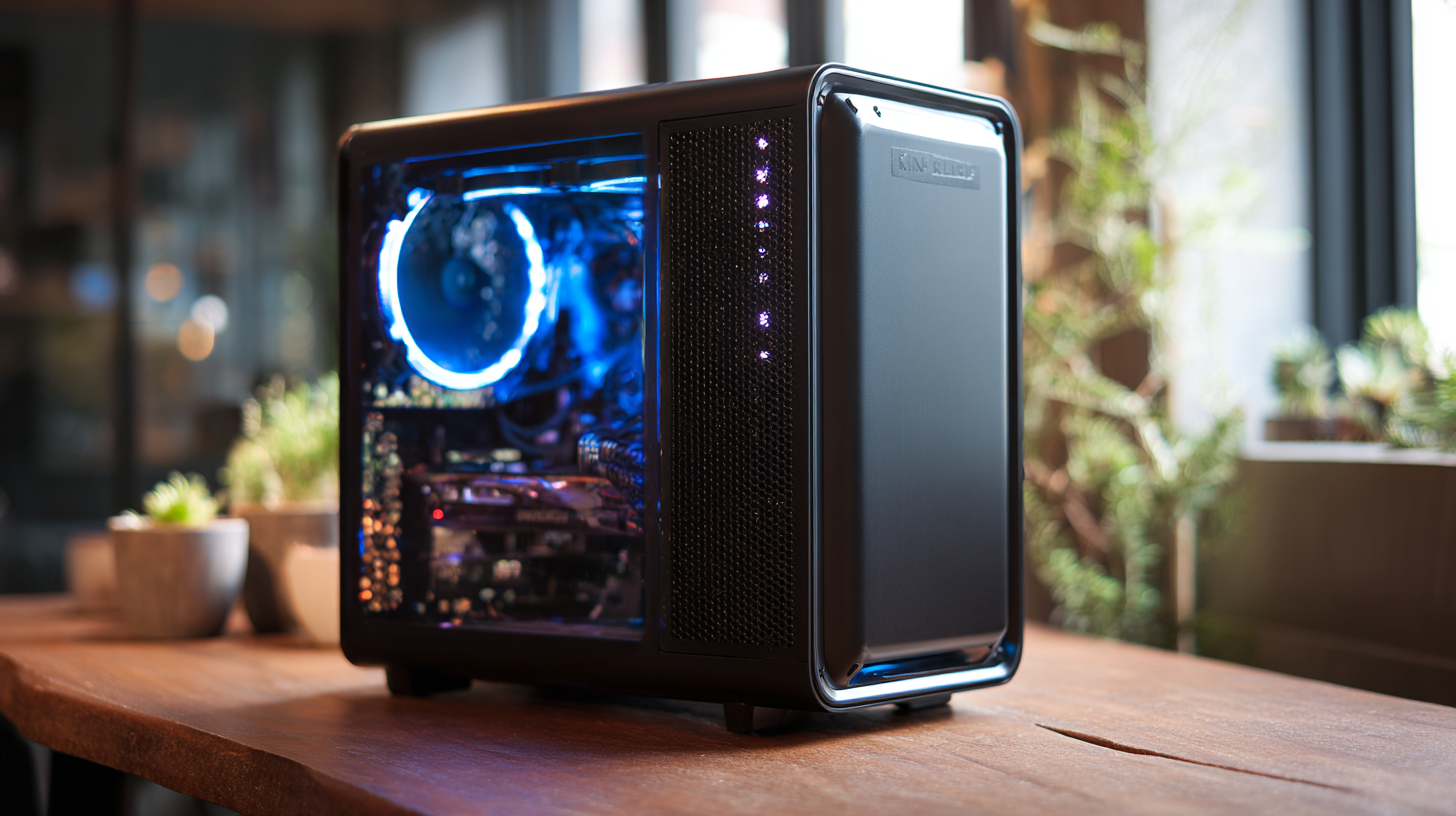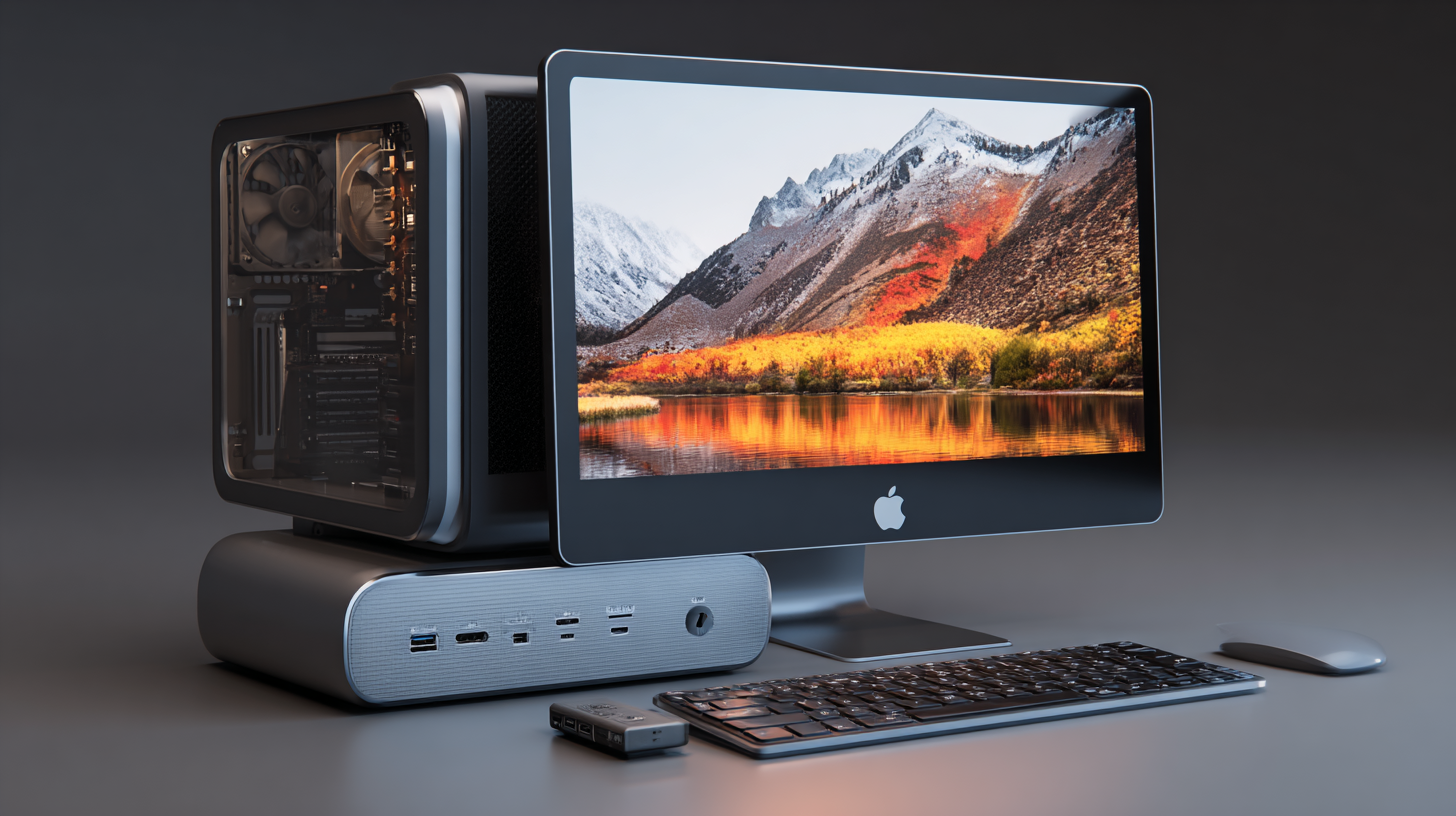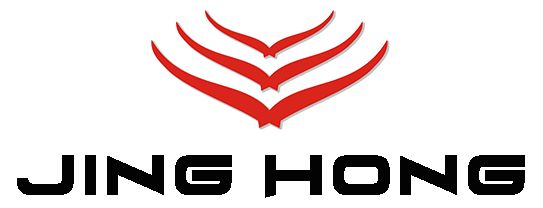One-stop service of R&D, production and sales for 10 years
Leave Your Message
As the demand for efficient and
space-saving technology continues to rise, the
Kleine Desktop Computer
emerges as a frontrunner in the compact computing market. Recent
industry reports indicate that the global desktop computer market is
projected to reach $80 billion by 2026, driven by
innovations in miniaturization and energy efficiency. With advancements
in processing power and storage solutions, the Kleine Desktop Computer
not only meets the needs of modern users but also offers a sustainable
alternative to traditional desktop setups.

As businesses and consumers alike seek to maximize productivity while minimizing their physical footprint, understanding the advantages and functionalities of these compact systems is crucial. This blog will explore the future of compact computing, highlight the leading models in the Kleine Desktop Computer category, and provide insights on how to choose the best option for your computing needs.
 The evolution of compact computing has significantly transformed our interaction with technology,
paving the way for a future where powerful computing is accessible in smaller, more efficient forms. Over the past few decades,
we have witnessed the miniaturization of hardware, driven largely by advancements in semiconductor technology and innovative design practices.
This metamorphosis has not only shrunk the physical size of computers but also enhanced their performance, making them
indispensable tools in various sectors such as education, business, and entertainment.
The evolution of compact computing has significantly transformed our interaction with technology,
paving the way for a future where powerful computing is accessible in smaller, more efficient forms. Over the past few decades,
we have witnessed the miniaturization of hardware, driven largely by advancements in semiconductor technology and innovative design practices.
This metamorphosis has not only shrunk the physical size of computers but also enhanced their performance, making them
indispensable tools in various sectors such as education, business, and entertainment.
Globally, the impact of compact computing extends beyond mere convenience. In developing regions, smaller,
more affordable computing solutions have democratized access to technology, enabling individuals and communities to engage with
digital platforms that were previously out of reach. This shift fosters education and entrepreneurship, ultimately contributing to
economic growth. Moreover, as environmental concerns gain prominence, compact computers
generally consume less power and require fewer resources to manufacture, aligning with the global agenda for sustainable development.
The future of compact computing appears bright, as these devices continue to evolve, paving the way for
a more interconnected and resource-efficient world.
When searching for the best Kleine desktop computers, several key features are essential to consider in today's evolving technology landscape. Compact computers have surged in popularity, with a recent report by IDC projecting that small form factor (SFF) PCs will account for 35% of desktop sales by 2025. This trend is driven by the increasing demand for space-saving solutions without sacrificing performance.
One of the critical features to look for is processing power. Modern Kleine desktops typically come equipped with advanced CPUs, such as the latest generations of Intel and AMD processors, ensuring they can handle everything from basic tasks to intensive applications. According to a Gartner analysis, desktop workstations with high-performance processors demonstrated a 20% increase in efficiency over previous models. Additionally, robust graphics capabilities are crucial for users who engage in graphic design, gaming, or other visually demanding tasks, with many compact models now incorporating dedicated GPU options.
Another significant aspect is connectivity. With the rise of remote work and cloud computing, the need for multiple USB ports, HDMI outputs, and high-speed Wi-Fi has become paramount. A report from Statista indicates that 68% of remote workers rely on multiple devices simultaneously, making versatile connectivity a must-have feature for Kleine desktops. As we continue to embrace a more digital lifestyle, these features will define the best Kleine desktop computers in the years to come.
The landscape of electronic manufacturing is evolving rapidly, with Chinese manufacturers setting a high standard for quality production. As the market for electronic manufacturing services is projected to grow exponentially—from $648.11 billion in 2025 to $1033.17 billion by 2032—China remains at the forefront of this growth. Their commitment to quality, cost efficiency, and technological advancement positions them as leaders in the global electronics sector. This dominance comes not only from large-scale production but also from strategic partnerships that expand their reach in foreign markets.
Recent discussions between prominent Chinese smartphone manufacturers and Indian companies highlight the collaborative spirit driving this industry forward. As India becomes a significant player in the global manufacturing landscape, the blending of Chinese expertise with Indian resources can create a robust electronic ecosystem. Moreover, Chinese manufacturers are now leveraging social media platforms to challenge the perception of luxury goods, emphasizing that high-end products often originate from their manufacturing hubs. This transparency about production practices not only sets new benchmarks but also reshapes consumer attitudes towards value and quality in electronics.
 As remote work and flexible office spaces become increasingly common, compact computers have emerged as essential tools in modern work environments. Designed to fit seamlessly into any nook, these small yet powerful machines maximize workspace efficiency without sacrificing performance. Whether it's for a cozy home office or a collaborative team area, compact desktops provide the computing power needed for demanding tasks while ensuring that desks remain clutter-free.
As remote work and flexible office spaces become increasingly common, compact computers have emerged as essential tools in modern work environments. Designed to fit seamlessly into any nook, these small yet powerful machines maximize workspace efficiency without sacrificing performance. Whether it's for a cozy home office or a collaborative team area, compact desktops provide the computing power needed for demanding tasks while ensuring that desks remain clutter-free.
In addition to physical space considerations, compact computers also promote sustainability. Their smaller size often leads to lower energy consumption, making them a more eco-friendly option compared to traditional desktops. As businesses and individuals alike become more conscious of their environmental impact, the shift towards energy-efficient technologies reflects a broader commitment to sustainability. Ultimately, the role of compact computers in contemporary workspaces not only enhances productivity but also aligns with the growing priority of environmental responsibility.
The landscape of desktop computing is rapidly evolving, driven by advancements in technology and changing user preferences. According to a recent report by IDC, the global market for compact desktop computers is projected to grow at a compound annual growth rate (CAGR) of 6.3% from 2023 to 2028. This trend highlights a growing demand for smaller, more efficient systems that do not compromise on performance. Users are increasingly seeking devices that can blend seamlessly into their workspaces while offering powerful functionality, indicating a shift toward compact computing solutions.
As technology continues to advance, expect innovative designs that prioritize energy efficiency and modularity. Industry analysts from Statista predict that by 2025, over 50% of desktop computers sold will be integrated with AI capabilities, enhancing user experiences through smart power management and automated tasks. Furthermore, the integration of cloud computing will enable users to expand their capabilities without the need for bulky hardware. Compact desktops are set to redefine traditional computing, making technology more accessible and adaptable to varying user needs in both personal and professional environments.
This chart displays the expected impact of several key trends in desktop computing by 2025. The dimensions measured include compact size, energy efficiency, performance, connectivity, and user customization, which are vital indicators of the future direction in compact desktop computing.
